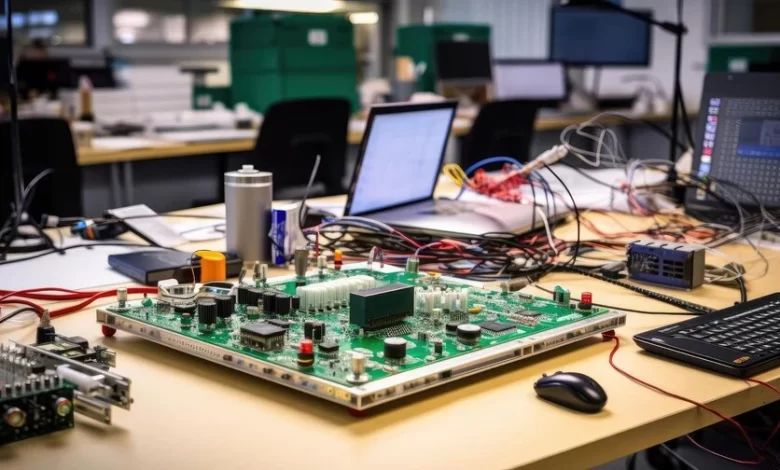How to Choose Energy-Efficient Electronics for Your Home

Ever felt like your electricity bill was draining your wallet faster than a kid with your credit card in a candy store? You’re not alone. But here’s the kicker: choosing the right energy-efficient electronics for your home isn’t just about saving a few bucks. It’s about joining a revolution that’s good for your pocket and the planet. So, let’s dive into the world of energy-saving tech and discover how you can make your home a lean, green, energy-efficient machine!
Key Takeaways:
- Energy-efficient electronics can significantly reduce your utility bills and carbon footprint
- Look for ENERGY STAR certification and EnergyGuide labels when shopping
- Consider both upfront costs and lifetime operating expenses
- Smart features and proper maintenance can boost efficiency
- Government incentives and rebates can make upgrades more affordable
Understanding Energy Efficiency: More Bang for Your Buck
Let’s start with the basics. What exactly is energy efficiency? Simply put, it’s about squeezing more use out of every watt of electricity. Energy-efficient electronics are designed to do the same job as their power-hungry cousins, but with less juice. It’s like having a car that goes further on a single tank of gas.
But why should you care? Well, for starters, using energy-efficient appliances and electronics can put a serious dent in your utility bills. We’re talking potentially hundreds of dollars in savings each year. And it’s not just your wallet that’ll thank you – Mother Nature will too. By reducing your energy consumption, you’re helping to lower carbon emissions and combat climate change.
Here’s the cherry on top: many governments and utility companies offer rebates and tax credits for energy-efficient upgrades. It’s like they’re paying you to save money. Now that’s what I call a win-win!
The A-Team of Energy-Efficient Electronics
So, what kinds of energy-efficient electronics should you be on the lookout for? Let’s break it down:
- Major Appliances: These are the big guns in your home’s energy arsenal. We’re talking refrigerators, dishwashers, washing machines, and dryers. These babies can make or break your energy bill, so choosing wisely is key.
- Small Appliances: Don’t underestimate the little guys! Coffee makers, toasters, and blenders might seem insignificant, but their energy use can add up over time.
- Electronics: TVs, computers, and gaming consoles are the fun stuff, but they can be energy vampires if you’re not careful.
- Lighting: Switching to LED bulbs and smart lighting systems can brighten up your home without dimming your wallet.
- HVAC Systems: Heating and cooling account for a huge chunk of your home’s energy use. Energy-efficient heat pumps, furnaces, and AC units can make a massive difference.
- Water Heaters: These often-forgotten appliances can be major energy hogs. Upgrading to an efficient model can lead to some serious savings.
Choosing Your Energy-Efficient Champions: What to Look For
Alright, so you’re ready to start shopping for energy-efficient electronics. But how do you separate the energy-saving studs from the power-guzzling duds? Here are some key factors to keep in mind:
Size Matters
When it comes to appliances, bigger isn’t always better. An oversized refrigerator or washing machine won’t just waste space – it’ll waste energy too. Choose appliances that fit your needs without going overboard.
Labels to Love
Keep an eye out for these energy-saving badges of honor:
- ENERGY STAR Certification: This is the gold standard for energy efficiency. ENERGY STAR certified products meet strict energy efficiency guidelines set by the U.S. Environmental Protection Agency and the Department of Energy.
- EnergyGuide Labels: These yellow tags are like nutritional labels for appliances. They show you the estimated annual energy consumption and operating costs, making it easy to compare different models.
Smart is the New Sexy
Smart features aren’t just cool – they can also boost energy efficiency. Look for:
- Smart thermostats that learn your habits and optimize heating and cooling
- Appliances with Wi-Fi connectivity for remote control and scheduling
- Smart plugs that can cut power to devices when they’re not in use
Think Long-Term
Don’t just focus on the price tag. Consider the lifetime operating costs of the appliance. An energy-efficient model might cost more upfront, but it could save you big bucks over its lifespan. Remember, most appliances last 9-12 years, so those savings can really add up!
Energy-Saving Tips: Maximize Your Efficiency
Buying energy-efficient electronics is just the first step. To really slash your energy bills, you need to use them wisely. Here are some pro tips:
- Full Loads Only: When it comes to dishwashers and washing machines, wait until you have a full load before running them. It’s more efficient than running multiple small loads.
- Go Eco: Many appliances have eco-friendly settings. Use them! They might take a bit longer, but they’ll use less energy.
- Cool It Down: Washing clothes in cold water can save a ton of energy. Most modern detergents work just fine in cool temps.
- Unplug to Power Down: Many electronics continue to draw power even when they’re “off”. This “vampire power” can account for up to 10% of your electricity bill. Use power strips or smart plugs to cut the juice completely when devices aren’t in use.
- Keep It Clean: Regularly clean and maintain your appliances. A dusty refrigerator coil or a clogged dryer vent can make your appliances work harder and use more energy.
- Out With the Old: If your appliances are more than a decade old, it might be time for an upgrade. The energy savings from a new, efficient model could quickly offset the cost of replacement.
Appliance All-Stars: Top Picks for Energy Efficiency
Now, let’s get specific. Here are some recommendations for energy-efficient appliances that’ll help you save big:
Refrigerators: Top or Bottom Freezer Models
When it comes to fridges, location matters. Models with the freezer on top or bottom tend to be more efficient than side-by-side designs. Look for ENERGY STAR certified models with features like adjustable shelves and temperature controls.
Dishwashers: ENERGY STAR Certified with Eco Cycles
Choose a dishwasher with the ENERGY STAR label and look for models with eco-friendly cycles. These use less water and energy without sacrificing cleaning power. Bonus points for models with soil sensors that adjust the wash cycle based on how dirty your dishes are.
Washing Machines: Front-Loaders for the Win
Front-loading washing machines generally use less water and energy than top-loaders. They also spin faster, removing more water and reducing drying time. Look for models with high spin speeds and adjustable water levels.
Dryers: Heat Pump Technology
Heat pump dryers are the new kids on the block, and they’re making waves in energy efficiency. They can use up to 50% less energy than conventional dryers. While they’re pricier upfront, the energy savings can be substantial over time.
Ovens: Convection for the Win
Convection ovens circulate hot air, cooking food more evenly and quickly. This can reduce cooking times by up to 25%, saving you both time and energy. Look for models with good insulation to keep the heat where it belongs – inside the oven.
Show Me the Money: Financing and Incentives
Now, I know what you’re thinking. “All this energy-efficient stuff sounds great, but how am I supposed to afford it?” Well, here’s some good news – there’s help available!
Government Rebates and Tax Credits
Uncle Sam wants you to save energy. The federal government, as well as many state and local governments, offer rebates and tax credits for purchasing ENERGY STAR certified products. These can significantly reduce the upfront cost of energy-efficient appliances and electronics.
Utility Company Incentives
Many utility companies offer their own incentives for energy-efficient upgrades. These might include discounts on energy-efficient products, rebates, or even free energy audits to help you identify areas for improvement.
Financing Options
If you’re looking to make major upgrades (like a new HVAC system), look into financing options. Some utility companies offer on-bill financing, where you pay for the upgrade through your monthly utility bill. There are also low-interest loans specifically for energy-efficient home improvements.
Here’s a quick rundown of some available incentives:
| Program | Type | Potential Savings |
|---|---|---|
| Federal Tax Credits | Tax Credit | Up to $500 for ENERGY STAR certified products |
| State Rebates | Cash Rebate | Varies by state, can be $50-$500+ |
| Utility Discounts | Instant Savings | 10-25% off energy-efficient products |
| On-Bill Financing | Loan | 0% interest loans for major upgrades |
Remember, these programs change frequently, so always check the ENERGY STAR website or your local utility company for the most up-to-date information.
Wrapping It Up: Your Path to an Energy-Efficient Home
Alright, let’s bring it all home. Choosing energy-efficient electronics isn’t just about being trendy or eco-friendly (though those are great reasons too). It’s about making smart choices that benefit your wallet and the world around you.
By opting for ENERGY STAR certified appliances, leveraging smart technology, and adopting energy-saving habits, you can significantly reduce your energy consumption. This means lower utility bills, a smaller carbon footprint, and the satisfaction of knowing you’re doing your part for the environment.
Remember, every little bit helps. You don’t have to overhaul your entire home overnight. Start small – maybe replace that ancient refrigerator or swap out your light bulbs for LEDs. As your old appliances and electronics reach the end of their life, replace them with energy-efficient models. Before you know it, you’ll be living in a lean, green, energy-saving machine of a home.
So, are you ready to join the energy efficiency revolution? Your wallet, your comfort, and the planet are all counting on you. Let’s power up smartly and save some serious energy!



